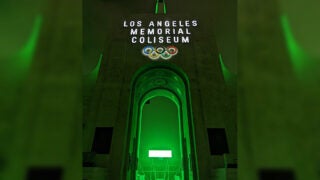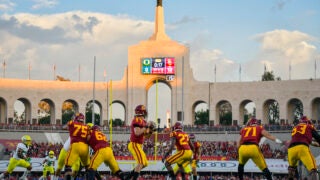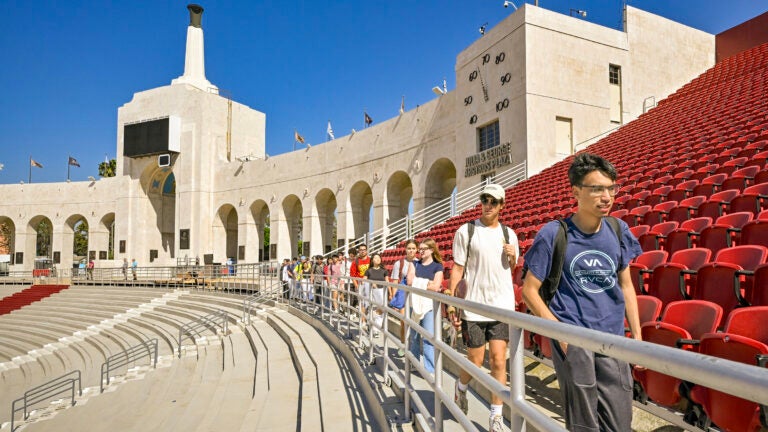
Students in seven different fall classes got an up-close look at the historic venue as part of their coursework. (USC Photo/Gus Ruelas)
L.A. Coliseum brings USC classroom concepts to life
Experiential learning classes use the historic venue as a living laboratory. Students explore the stadium’s rich past and current operations — and help envision its future.
The year is 2123. You’ve arrived at the Los Angeles Memorial Coliseum to watch a USC Trojans football game. The stadium, now 200 years old, looks much the same — but the experience has been transformed.
An autonomous valet parks your car for you. A drone delivers your hot dog and soda to your lap. Augmented reality glasses make it seem like you have 50-yard-line seats, even though you’re in the end zone upper level. A neuro-enhancing device interfaces with your auditory cortex so you hear customized commentary about the game and your favorite players.
Though some of this technology is speculative, the proposals themselves are real. Students at the USC Jimmy Iovine and Andre Young Academy pitched these ideas to Coliseum staff this fall as part of their course “Industry Practicum: Designing and Implementing Real-World Solutions.” Their assignment was to imagine how the Coliseum — which turned 100 this year — might evolve in the next 100 years in response to emerging technologies and societal/community needs, and then design human-centered experiences and strategies to match those visions.
The course — taught by Yihyun Lim, assistant professor of practice in interaction design — is one of seven USC undergraduate courses this fall that includes an experiential learning component at the Coliseum.
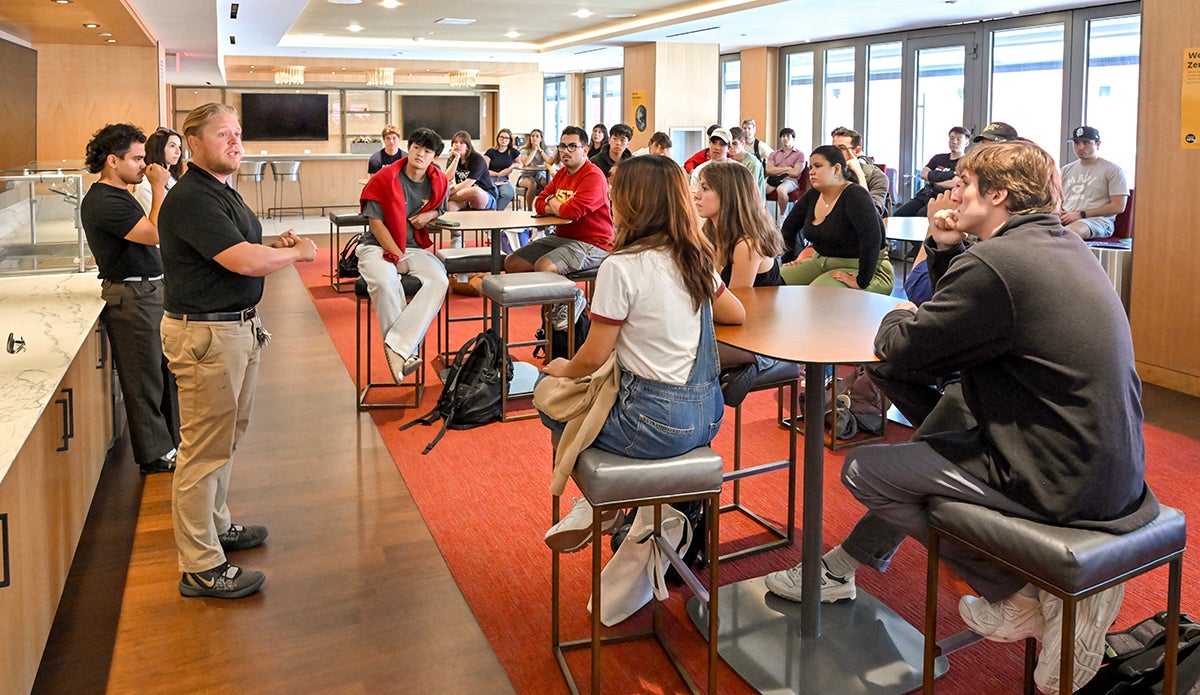
While the iconic stadium adjacent to the University Park Campus has served as a learning laboratory for USC classes many times in the past, the current cluster of classes was planned to highlight the centennial celebration. Class tours and hands-on projects have allowed students to learn from the venue’s rich past, participate in its present operations and pitch ideas for its future evolution.
Coliseum staff members have served as guest lecturers, tour guides and sounding boards for student proposals, which, if deemed feasible, could be adopted by the Coliseum.
“I’m very interested in understanding what a new generation can see and envision,” said Joe Furin, general manager of the Coliseum. “They may spot things that [the staff] aren’t even thinking about. And that’s what’s very exciting.”
Classes in the Coliseum: Beyond football
In October, students in the USC Thornton School of Music class “Concert Production and Promotion” — taught by Michael Garcia, associate professor of practice and chair of the music industry program — visited the Coliseum for a tour and talk. Staff members gave the class a behind-the-scenes look at what it’s like to produce large-scale music events at the stadium, which has hosted such huge acts as U2, Bruce Springsteen and the Rolling Stones.
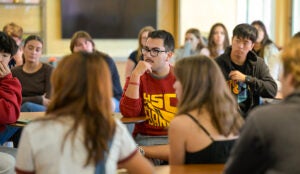
“The craziest part to me was [learning] that they do over 200 events a year,” said Giselle Strong, a junior with a music industry major. “I really only know them for football.”
The Coliseum has indeed been the home of USC Trojans football continuously since 1923 and under USC management since 2013. Yet the students in this semester’s “Sports Marketing” class at the USC Marshall School of Business — taught by Arianna Uhalde, an assistant professor of clinical marketing — developed marketing plans for the Coliseum that transcended athletics and encompassed concerts and cultural happenings, too.
“I think it’s fun for [students] to see the Coliseum from a different perspective, as if they were working to manage the Coliseum rather than cheering on the football team from the student section,” Uhalde said.
For Jack Doss, a senior majoring in business administration and minoring in sports media industries, the opportunity to share his ideas with Coliseum leaders infused his studies with real-world impact.
“There’s a big difference between just presenting to your classmates and presenting to actual executives or industry professionals,” Doss said. “It makes it feel like I’m in a real job, and that’s a unique experience you don’t get in most classes.”
Making sustainability accessible
In keeping with USC President Carol Folt’s sustainability “moonshot” — which has goals including significantly reducing water usage, diverting landfill waste and achieving carbon neutrality at USC — several courses have explored the Coliseum through a sustainability lens.
Touring the recently renovated Coliseum offered USC School of Architecture students in the “Building Structures and Seismic Design” class a lesson in adaptive reuse. Instructor Bhavna Sharma, an assistant professor of architecture, explained that renovating structures generates fewer greenhouse gas emissions than demolishing them and building anew.
“This was a direct opportunity to highlight how a 100-year-old building has managed to withstand the test of time and adapt to a changing culture … and still retain the essence of what was originally built,” she said.
Students in the environmental studies course “Operations and Impacts of Zero Waste Events” — taught by Monalisa Chatterjee, an associate professor of environmental studies at the USC Dornsife College of Letters, Arts and Sciences — observed the Coliseum’s waste-sorting processes on game days to achieve zero waste (at least 90% of waste is diverted from landfills). They assisted the Coliseum’s sustainability team by monitoring outside vendors to ensure that the products sold were either compostable or recyclable.
Chatterjee noted that her students were amazed by the scale of the effort. “Nobody realizes how much work goes [into it] unless you see it from the inside,” she said.
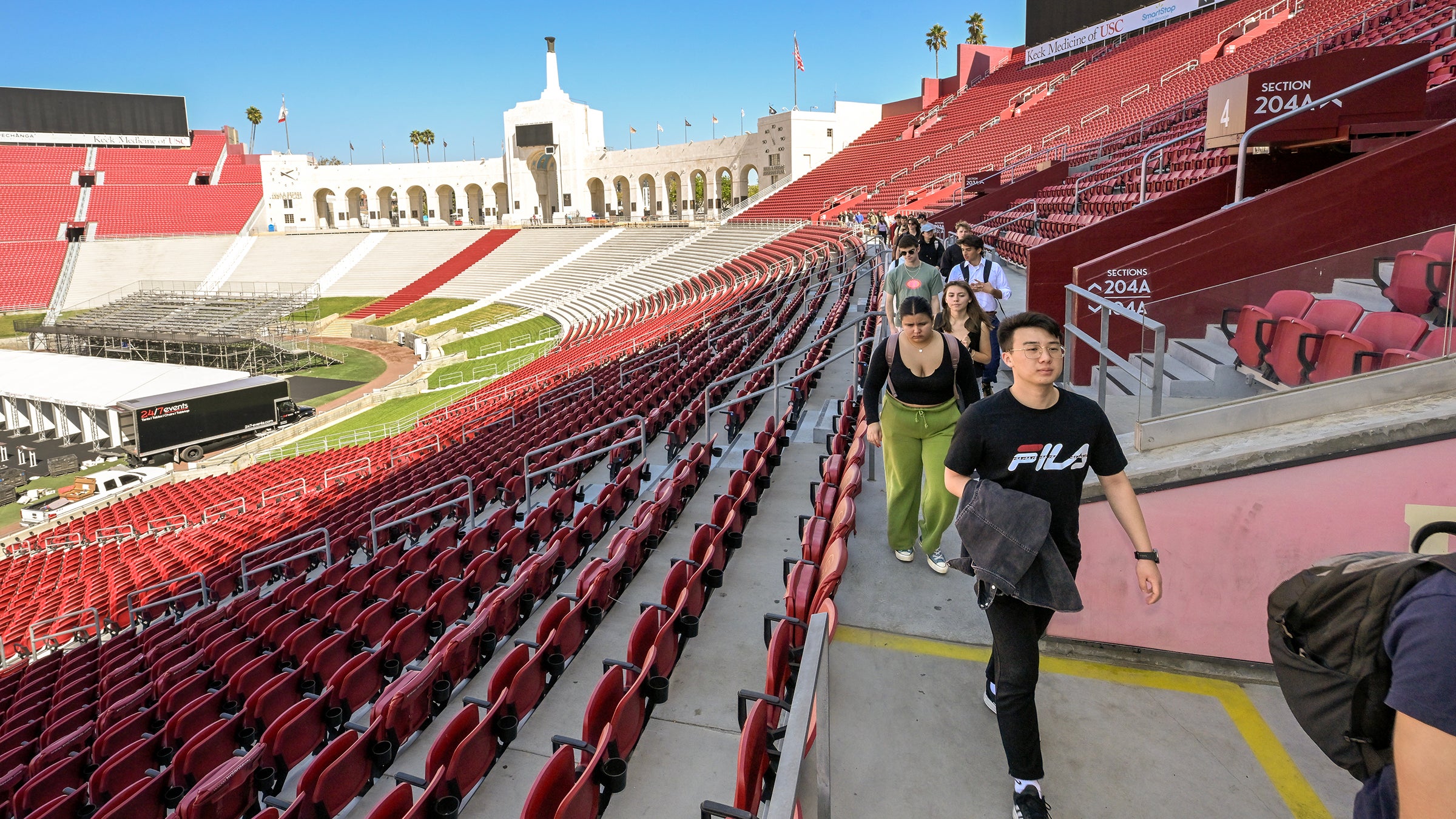
Victoria Petryshyn — a USC Dornsife associate professor of environmental studies whose courses “History of Climate Change” and “Science, Policy and Business of Energy and Air Sustainability” both incorporated a Coliseum visit this fall — appreciated how that insider perspective helped her students formulate pitches for everything from reducing energy consumption to scaling back carbon emissions and water usage.
“Solving a sustainability issue for this enormous building … seems like so much to bite off,” Petryshyn said. “Then, when it’s broken down, they’re surprised at how much can be done.”
Sara Eyassu, a sophomore environmental studies major enrolled in Petryshyn’s “Science, Policy and Business of Energy and Air Sustainability” class, enjoyed the opportunity to collaborate with classmates and Coliseum staff on a proposal to reduce energy use throughout the stadium using passive design strategies.
“It’s really great that we’re able to take something so local, so close to home, and [so] important to this university, and be able to apply it to a class,” Eyassu said. “It’s way better than just reading [material] from a textbook.”
Marina Fote, the assistant to the Coliseum’s general manager who coordinated each class’s on-site learning, noted that this fall’s crop of courses is just the beginning.
“The Coliseum team is very lucky to have the opportunity to learn and gain valuable perspective from so many bright, innovative minds,” Fote said. “We look forward to continuing to grow this mutually beneficial partnership with the USC schools we’ve already been working with and beyond.”


